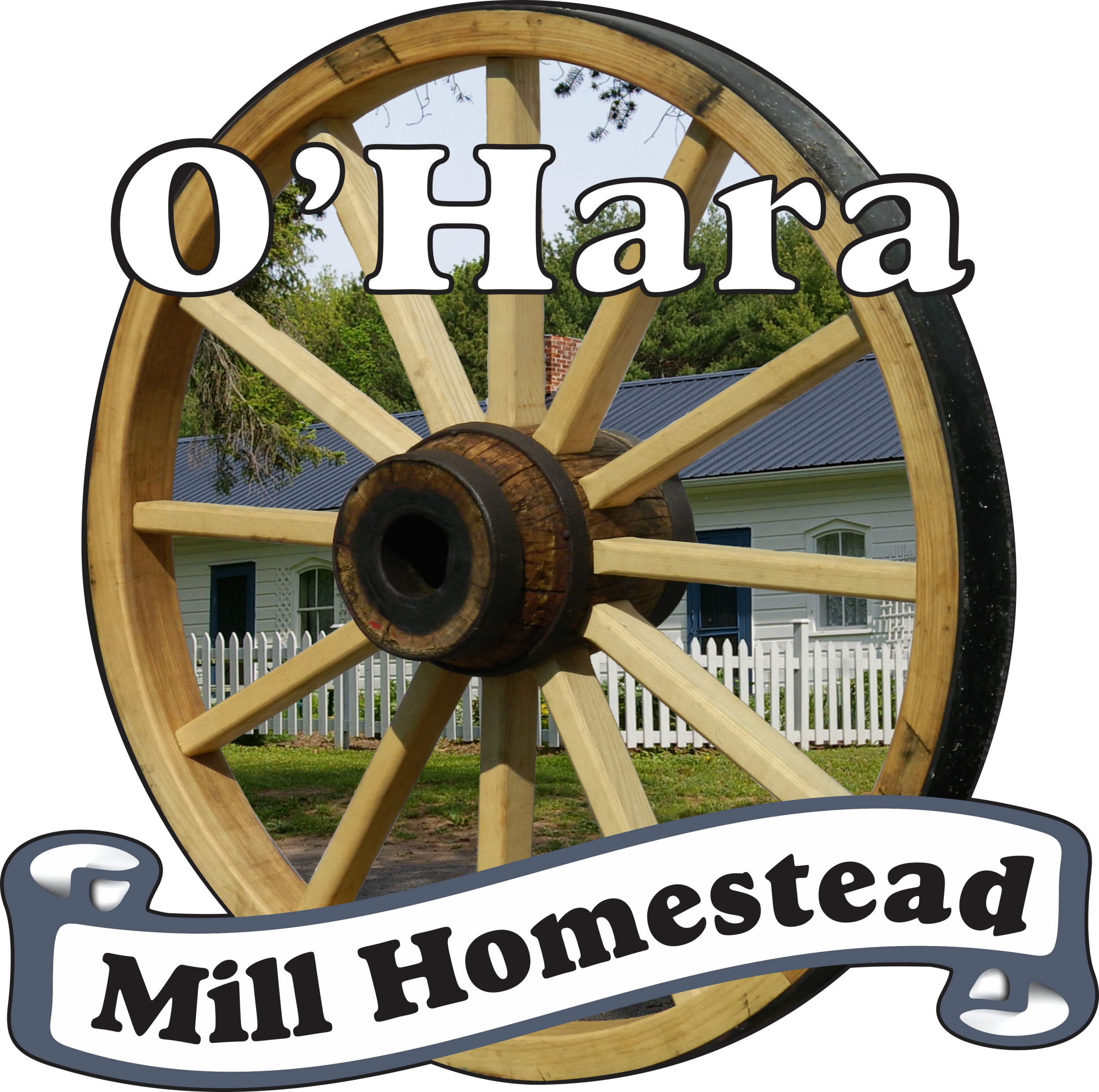Bringing the Wheat!
AGRICULTURE/ AUGUST 13TH, 2021
Reaper, used for cutting grain.
Harvest was a big event in the settler’s lives. Nearly all of their time and energy spent near the end of the fall was devoted to the harvest. Children wouldn’t go to school during that time as they were needed to help with harvesting and related tasks.
Timing was everything, if the farmer harvested too early the crops would not be fully developed but if he harvested too late he would risk losing everything to the first frost of the season. Many farmers learned from their fathers how to tell when the crops were ready for harvest and what to look out for to know when the frost was coming. James O’Hara Jr. was given the title of local “weather prophet” as he could accurately predict winter conditions for the year. Many farmers in the area depended on James’s prediction to know when to start their harvest.
Belt-operated threshing machine.
There are many different ways farmers would harvest their crops as well as a variety of different equipment/machinery. Harvest could also take up different amounts of time depending on the amount of help and the size of the field(s). Wheat and other grains were the main crops that were grown in fields at the time and required multiple stages within the harvest to allow for drying and processing.
When harvesting wheat, the first step was cutting. A large scythe, or cradle scythe, would be used to “reap” the grain from the lower stem. The scythes were used by hand which was a strenuous and dangerous job. Once larger machinery began to be developed, “reapers” took over this job. They would be pulled by either a team of horses or a tractor and would cut larger quantities of grain at once. The process went much faster with the introduction of the reaper which allowed for larger or more fields to be seeded in the upcoming years.
After the reaping was done, the cut grain would be scattered across the field. It then needed to be raked into rows to be worked with more easily. Once it was raked into rows, the grain would be arranged into “stooks” to be dried out in the sun. Stooks are bundles of crops that are stacked together to create a structure of sorts to allow better airflow. Drying the grain was an important step of the process as it discouraged mold growth and made it easier to separate the grain head from the stem. This separation was done in a process called “threshing”. To learn more about threshing, check out yesterday’s blog post!
Once the grain is separated from the stem, the stem is then referred to as straw. The straw wasn’t consumed by humans or animals, like hay, but it didn’t go to waste either. Straw was used as bedding (humans and animals), fuel, mulch, and even as building material! In fact, the mattresses in the O’Hara house are made of straw!
We also have several machines at O’Hara that are used to thresh the grain as well as bale the straw, check out the pictures to see!
𝓗𝓮𝓪𝓽𝓱𝓮𝓻 & 𝓜𝓲𝓪


